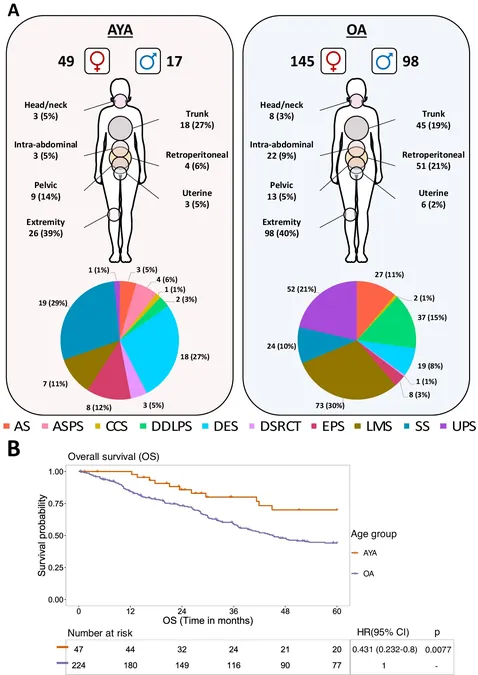
Revolutionary Study Uncovers Key Biological Insights that Could Transform Treatment for Young Adults Battling Sarcoma
2024-09-23
Targeting Aggressive Sarcoma
This study, spearheaded by researchers at The Institute of Cancer Research, London, illuminates the potential identification of a critical biomarker that may predict aggressive sarcoma behavior in AYA patients—those aged 16 to 39. This could revolutionize treatment protocols by allowing healthcare providers to differentiate between patients who require intensive care versus those who can safely avoid overtreatment, ultimately sparing them from unnecessary side effects while improving their quality of life.
Understanding Sarcomas
Sarcomas arise within the connective tissues of the body, such as muscles, fat, and blood vessels. They are classified as malignant (cancerous) and, although relatively rare, sarcomas account for 8% of cancer diagnoses in the AYA demographic—a stark contrast to just 1% in older adults. The study highlights that despite higher incidences, survival improvement has lagged due to inadequate specialized services and the significant underrepresentation of AYAs in clinical trials.
Diving into the Data
Utilizing data from 309 individuals, the researchers explored a diverse range of sarcoma types, including angiosarcoma and leiomyosarcoma, identifying a total of 8,148 proteins across samples. Remarkably, they quantified 3,299 of these proteins, uncovering significant differences—specifically, 32 proteins were found at elevated levels in AYA patients, while 35 were more prevalent in older adults. These biological markers can potentially influence how the tumors respond to treatment and affect overall survival rates.
Seeing the Future: A New Predictive Model
Among their findings, the team discovered that high expressions of certain cellular splicing subunits are linked to better metastasis-free survival (MFS)—the time span from the commencement of treatment until the cancer progresses. This unique splicing "signature" may serve as an invaluable tool for clinicians to identify AYA patients needing aggressive intervention, potentially making a significant difference in treatment outcomes.
Hope for the Future
According to Yuen Bun Tam, the study’s first author, there is a pressing need for therapies specifically designed for AYA patients—a gap that this research aims to address. The results underscore the importance of conducting age-specific studies that could lead to more effective and tailored treatment strategies, such as targeted agents for this unique demographic.
Dr. Paul Huang, the study's senior author, emphasized that the findings contribute vital insights into tumor biology, proving that many observed differences were independent of other clinical variables. Future research will aim to validate these results on a larger scale and explore the relationship between splicing signatures and tumor spread, thereby paving the way for innovative therapeutic options.
Will This Research Change the Face of Sarcoma Treatment?
The implications of these findings are enormous; they not only offer a clearer understanding of sarcoma in young adults but also hint at a brighter future where targeted therapies could vastly improve survival rates. As research continues, the hope is that we will witness a significant shift in how soft tissue tumors are managed in this vulnerable age group, sparking optimism for patients and families alike. Stay tuned as we track the next steps in this promising research journey!




 Brasil (PT)
Brasil (PT)
 Canada (EN)
Canada (EN)
 Chile (ES)
Chile (ES)
 España (ES)
España (ES)
 France (FR)
France (FR)
 Hong Kong (EN)
Hong Kong (EN)
 Italia (IT)
Italia (IT)
 日本 (JA)
日本 (JA)
 Magyarország (HU)
Magyarország (HU)
 Norge (NO)
Norge (NO)
 Polska (PL)
Polska (PL)
 Schweiz (DE)
Schweiz (DE)
 Singapore (EN)
Singapore (EN)
 Sverige (SV)
Sverige (SV)
 Suomi (FI)
Suomi (FI)
 Türkiye (TR)
Türkiye (TR)